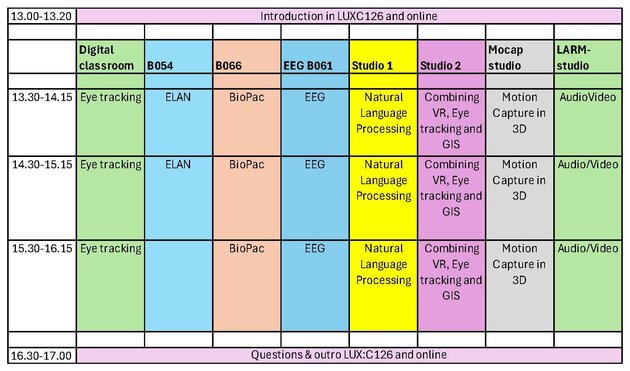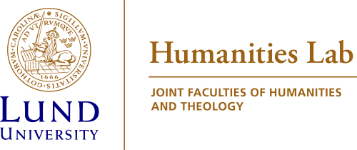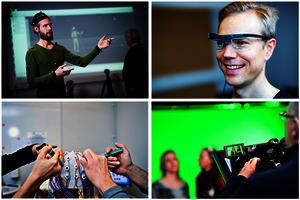Introduction to experimental methods in the humanities
25 October 2024 13:00 to 17:00
Don’t miss this golden opportunity to learn more about a wide variety of experimental research methods in the Humanities, given by Lund University Humanities Lab! Through demos, show cases, and hands-on sessions this workshop will give you an introduction to; Motion capture and 3D, EEG, eye tracking, language technology tools, recording audio/video, measuring electrophysiological responses with BioPac, and how to combine different technology for analysing historical buildings.
The introduction at 13.00-13.20 will be streamed online.
The workshop is arranged in collaboration with the national research infrastructure Huminfra (www.huminfra.se).
The event is free to attend for anyone engaged in research. The number of participants to each session is limited, make sure to reserve your spot before October 18!
Programme
All sessions will take place in or near the Humanities Lab. Lab staff will guide you to the different locations! The introduction will also be streamed online.
Coffe/tea and snacks will be avaliable during the workshop between all sessions.
Lab@SOL: Digital Classroom B055, B054, B066, B061, Studio 1, Studio 2
Lab @LUX: LUX:C126, Mocap studio, LARM-studio

Sessions
Introduction by the director, prof Marianne Gullberg (LUX C126)
A brief introduction to experimental methods, why they may be relevant in the Humanities.
The introduction will also be streamed online for thoses interested. A link will be sent out to everyone that has signed up for the online event.
Eye tracking (Digital classroom B055, @SOL)
Eye trackers are tools that estimate where someone looks and how the eyes move. We will talk about how eye trackers are used in research and also let you play with them!
Introduction to the analysis of multimodal behaviour with ELAN (B054, @SOL)
ELAN is an annotation tool that allows you to transcribe, annotate and visualize audio and video material for the analysis of multimodal behaviour (e.g., speech, sign language, gestures). In this tutorial, you will learn some basic functions of Elan, and you will practice with a guided exercise how to make annotations to analyze the alignment between speech and gesture.
Natural language processing (Studio 1, @SOL)
In this session we will demonstrate various tools for natural language processing. We will guide you through essential tools, resources, and workflows encompassing information extraction, content classification, large language models, and converting from handwritten and/or spoken media into textual data.
Combining VR, Eye-tracking and GIS (Studio 2, @SOL)
In this session we will show how you can use Virtual Reality, Eye tracking and GIS to experience and analyse the social dimension of a Pompeian house.
EEG (B061, @SOL)
EEG or electroencephalography is a non-invasive neuroimaging technique that allows us to look at what happens in the brain while we e.g., perform a task. During this session, we will look at the brain waves by placing an EEG cap on the head and discuss how the method can be used in research.
Bio Pac (B066, @SOL)
BioPac is a system that measures electrophysiological responses. At present, it consists of modules for galvanic skin response (GSR), heart beat frequency (ECG), respiratory movement, and airflow. The system is used to measure participants' reactions to external stimuli, such as video, images, sounds, and for the study of respiration in the production of speech and song.
Motion capture in 3D (Mocap studio, @LUX)
The Mocap Studio is set up for action to demonstrate easy and challenging workflows carried out to obtain millimetre accurate three dimensional motion data using a mocap system with high speed cameras and optical markers (Qualisys). The session will be a mix of introductions to the methodology, show cases from research projects and hands-on sessions with recordings of markers attached to fingers, hands, body or objects.
Introduction to audio and video in research (LARM-studio, @LUX)
How can audio and video be used in research? What tools are required? Discussion of different research that used audio and video and how you can use it in your research.


